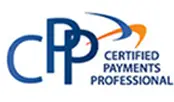ACH payments are electronic payments made through the Automated Clearing House (ACH) Network. They are a popular alternative to paper checks and credit card payments because of the benefits to merchants and consumers: everybody involved gets to save a little money and automate payments (which means fewer errors and less hassle).
If you’re thinking of collecting electronic payments from customers or making payments via ACH, it’s worth knowing how the system works from everybody’s perspective.
Most consumers are already familiar with these payments, although they might not use technical jargon to describe them: when employers pay through direct deposit or consumers pay bills electronically out of checking accounts, the ACH network is probably responsible for those payments. According to NACHA, the Electronic Payments Association behind the ACH network, over 23 billion ACH payments were made in 2014.
Basics of ACH
ACH payments are simply electronic transfers from one bank account to another. Common uses include:
- A customer pays a service provider
- An employer deposits money to an employee’s account
- A consumer moves funds from one bank to another
- A business pays a supplier for products
Because they’re electronic, ACH payments use fewer resources (paper, ink, fuel to transport checks, time and labor to handle and deposit checks, and so on). In addition, electronic transactions make it easier to keep track of your finances.
Instead of generic check information on a bank statement (“Check #3509 for $45.82” – what was that for?), you see the payee’s name without the need for further research. That makes it easier to sort or categorize transactions with your financial software.
ACH transactions can be electronic from start-to-finish, or they can happen when a paper check is converted and processed electronically.
Why Businesses Like ACH Payments
Businesses benefit from sending and receiving funds with ACH. When customers pay by check, businesses need to wait for the mail to arrive – then they need to get the check to the bank. Payments get lost sometimes, and entering those payments into a recordkeeping system is labor-intensive. Electronic payments are received more quickly and reliably, and there’s no need to forward checks to the bank and wait a few days to find out which checks bounced (however, the ACH does not give you a real-time approve/deny response like a credit card terminal does).
For businesses that accept payment by credit card, it costs less to process an ACH transfer than it costs to accept a credit card payment. Especially when collecting recurring payments, those savings add up, and automating those payments only increases the benefits.
Finally, businesses can accept payments by ACH remotely (although the same is true for credit cards). If your customers don’t have credit cards or prefer not to use them, ACH can add flexibility.
Why Consumers Like Paying with ACH
Consumers also benefit from ACH payments. There’s no need to write checks and get them into the mail on time. If using automatic ACH payments, they do not need to keep an eye out for bills – everything runs on autopilot – for better or worse.
How to Accept ACH Payments from Customers
To accept payments by ACH, you’ll need to partner with a payment processor. It’s possible that you already have a relationship with one – you’re just not yet using the ACH service (however, there are plenty of payment processors out there, so it pays to shop around for one that does exactly what you need).
Start by asking your existing service providers if they can handle ACH payments for you:
- The bank where you keep your business accounts
- The company that processes credit card (or other) payments for you already
- Your accounting software service provider
Compare their offers against vendors that you find through online searches – new competitors enter the business regularly.
How Much Does it Cost?
ACH is an option for businesses of any size. You’ll obviously pay less if you have higher volumes, but the same is true for credit card payments. NACHA reports that average costs are around 11 cents per transaction. For small businesses, service providers might charge three to five times that much (some only charge per-transaction, while others include a monthly fee or take a percentage of each payment). Depending on your average ticket size, those costs might still be competitive with the costs of processing debit card payments.
Be sure to look at the big picture when evaluating alternatives: it might not cost anything to accept checks, but what’s the tradeoff? Dealing with those checks takes time, and funds probably don’t get into your account as quickly. For some businesses (consultants who only get one or two checks per month, and for whom cash flow is not an issue), it might be more trouble than it’s worth to set up ACH. But others might come out ahead just by creating more time in the day.




